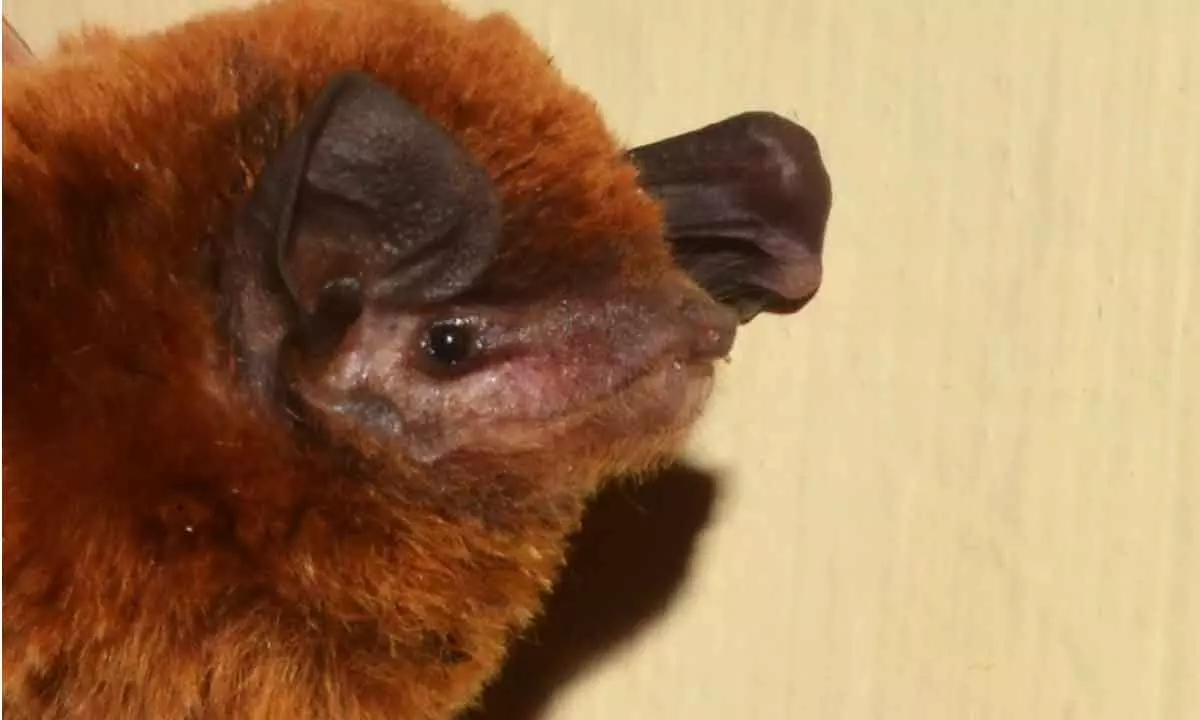Live
- Koil Alwar Tirumanjanam held at Tiruchanur
- ‘If you win, EVMs not tampered; when you lose, EVMs tampered’
- Delhi's air quality may slip to 'severe' in 24 hours
- Speed up PAC-5 works, TTD Addl EO tells staff
- Shinde resigns as CM amid BJP's push for Fadnavis
- Supreme Court's no to ballots papers
- Isro's Shukrayaan gets Centre’s nod
- Nellore dist witnesses widespread rains
- POCSO case registered against ex-MLA Chevireddy
- Fight to save democracy, Constitution will continue: Kejriwal
Just In
Hyderabad: Osmania University Zoologist identifies new species of bat


The newly identified species named Miniopetrussrinii after Prof. C Srinivasulu
Hyderabad : Zoologists from Osmania University (OU) have made a remarkable discovery, identifying a previously unknown species of bat in Makuta, Kodagu district, Karnataka. This newly found bat has been named Miniopetrussrinii, or Srini’s Bent-winged bat.
Dr. Bhargavi Srinivasulu, a zoologist from OU, along with her son Aditya Srinivasulu, a PhD researcher at the University of Reading, United Kingdom, conducted a comprehensive study to confirm the existence of this cryptic bat species. The specimens were collected from a vast subterranean cave nestled in the dense jungles of the Western Ghats in Makuta. Initially, they suspected it might be a variant of the Small Bent-winged bat, but further analysis revealed it to be a distinct species.
Bent-winged bats are known for their small size and tendency to form large colonies, consisting of a few hundred individuals, in caves. They can be found in various regions, including southern Europe, Africa, Madagascar, Asia, Australia, New Caledonia, and Vanuatu. In India, prior to this discovery, four species of bent-winged bats were recognized, but with the addition of this newfound species, the count has now risen to five, as affirmed by the zoologists.
The team meticulously collected bat specimens from the depths of the vast subterranean cave in the dense Western Ghats jungles of Makuta. It is worth noting that the Small Bent-winged bat has been observed in the Nicobar Islands, peninsular India, Nepal, and Northeast India.
Dr. Bhargavi Srinivasulu, a UGC Postdoctoral Fellow at the Department of Zoology, OU, explained that their research on Andaman bats unveiled genetic distinctions between island populations and mainland Indian populations. This discovery led them to suspect that the Makuta specimens and those found in other parts of the Western Ghats could be cryptic species. To determine the relationship between the Makuta specimens and others, they conducted a comprehensive study involving morphological, cranial, echolocation, and genetic analyses.
In honor of Prof. C Srinivasulu, a bat biologist working at OU, the newly identified species has been named after him.
The detailed description of this remarkable discovery has been published in the prestigious scientific journal Zootaxa, a peer-reviewed publication in the field of animal taxonomy.

© 2024 Hyderabad Media House Limited/The Hans India. All rights reserved. Powered by hocalwire.com






